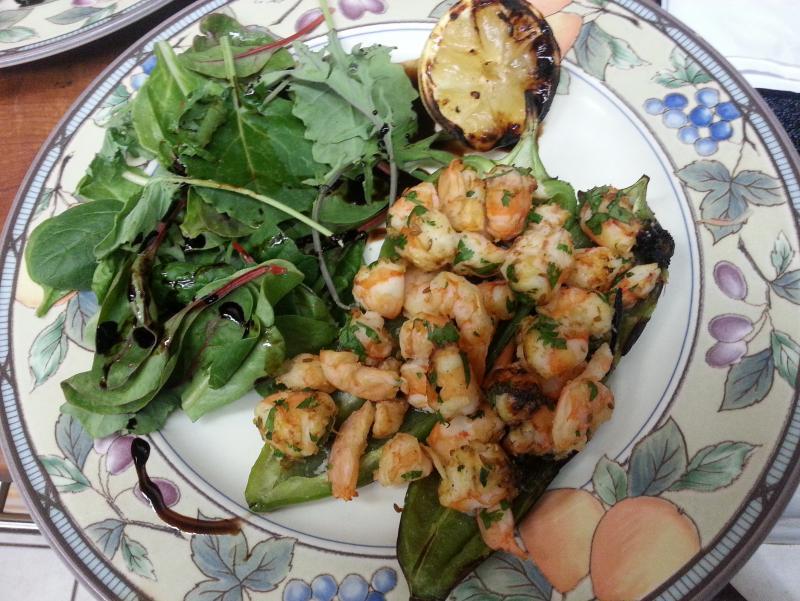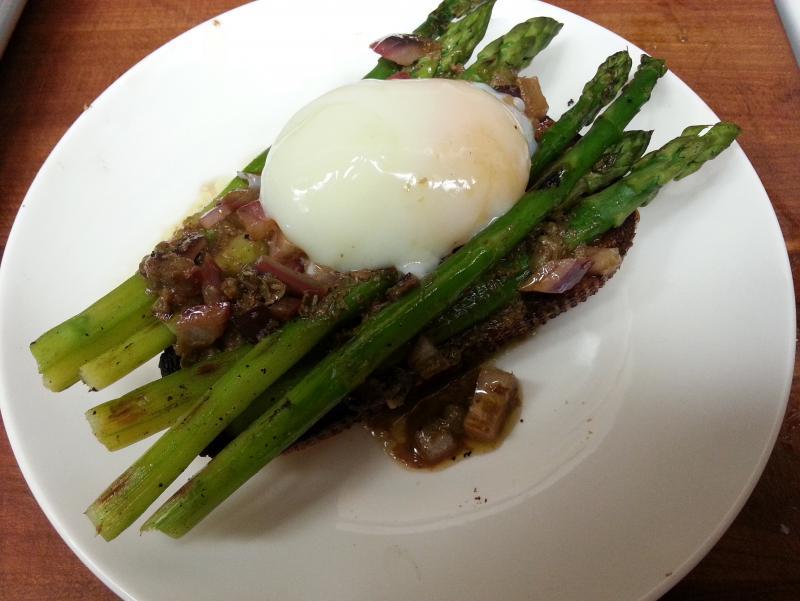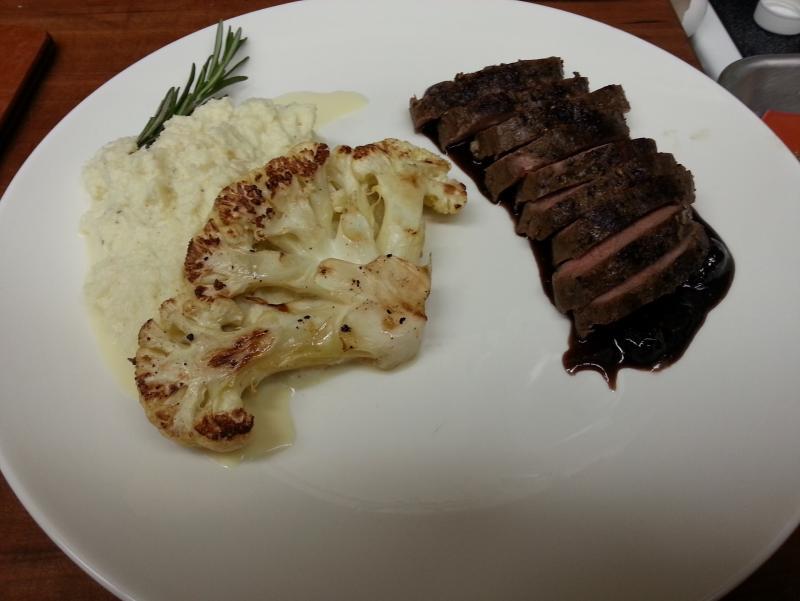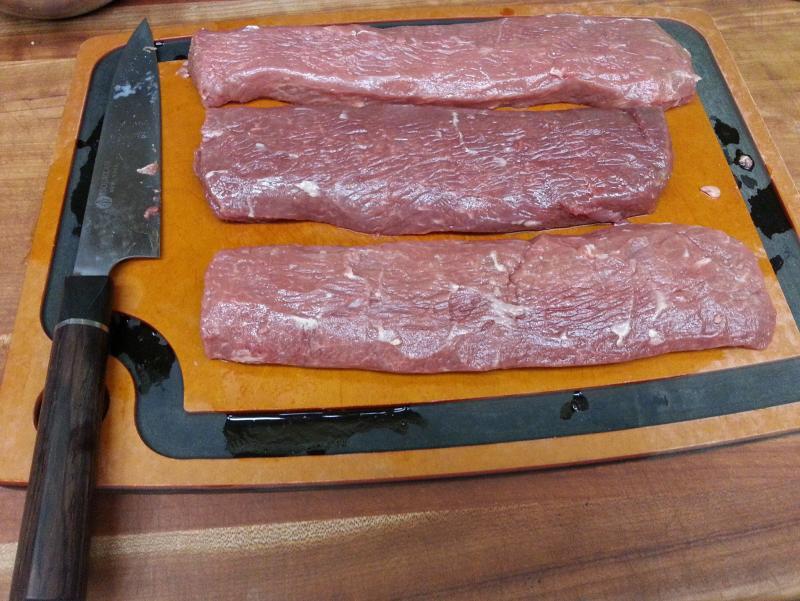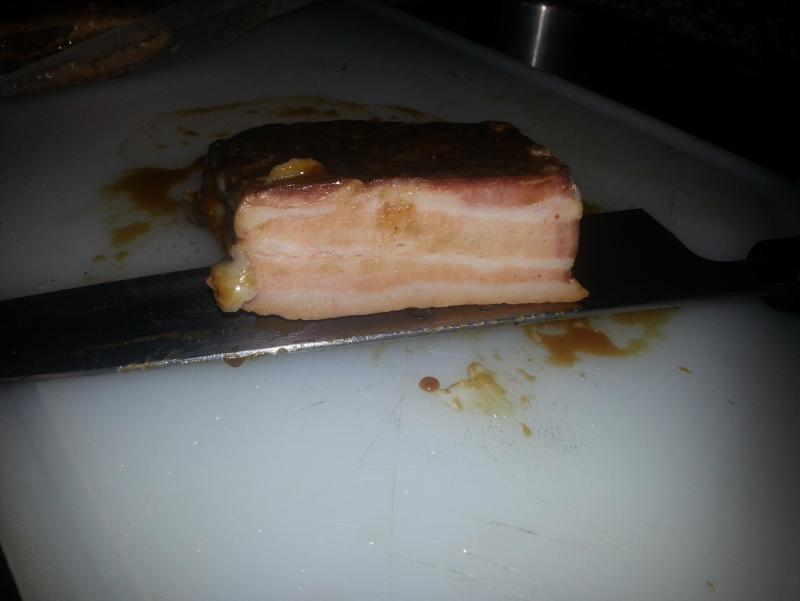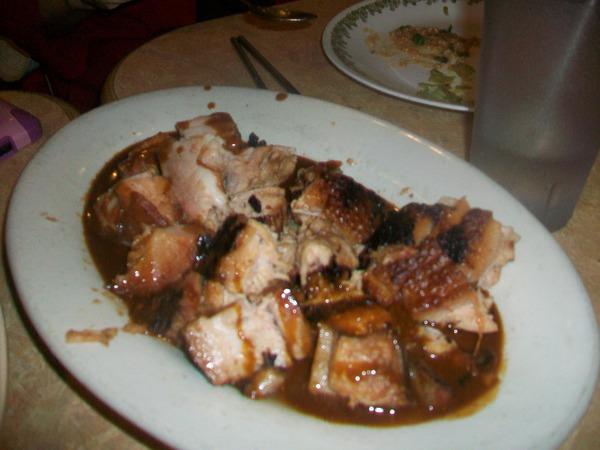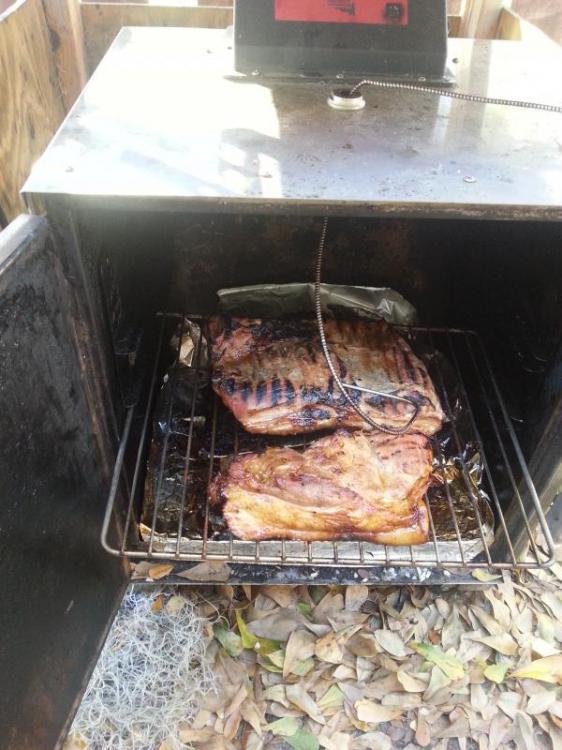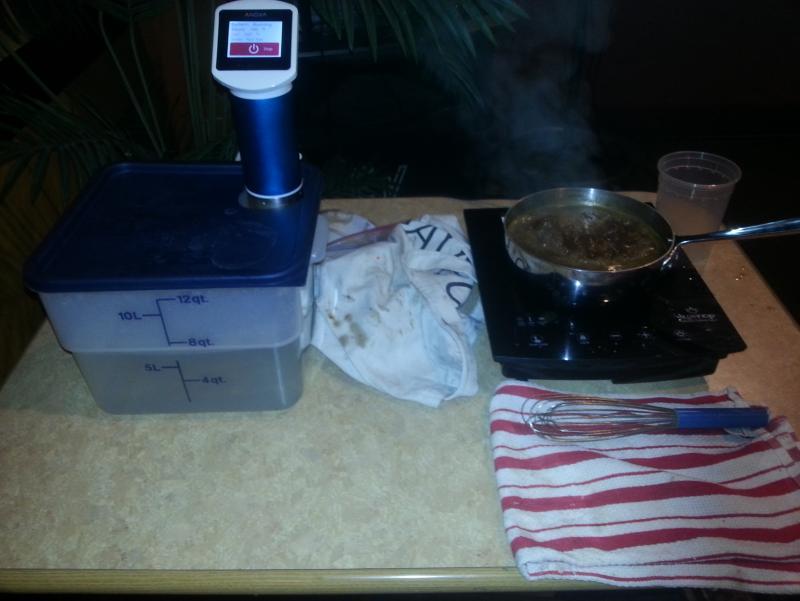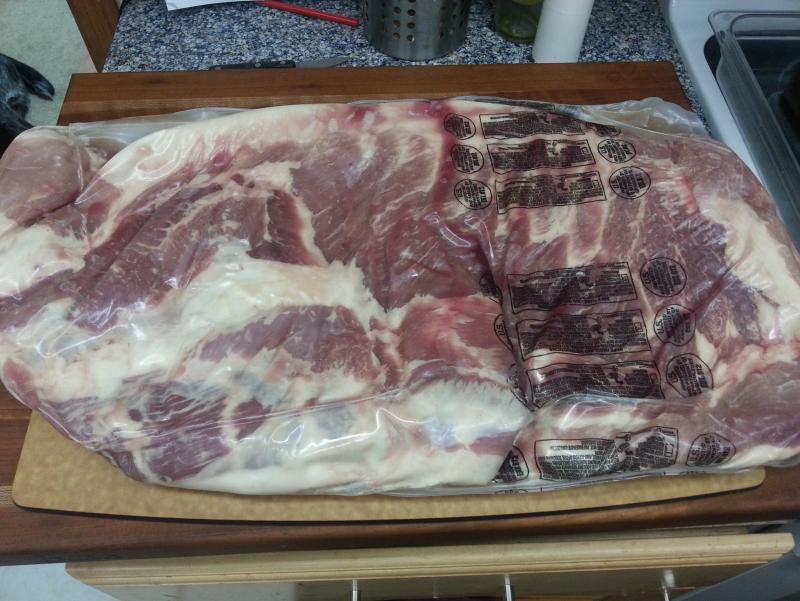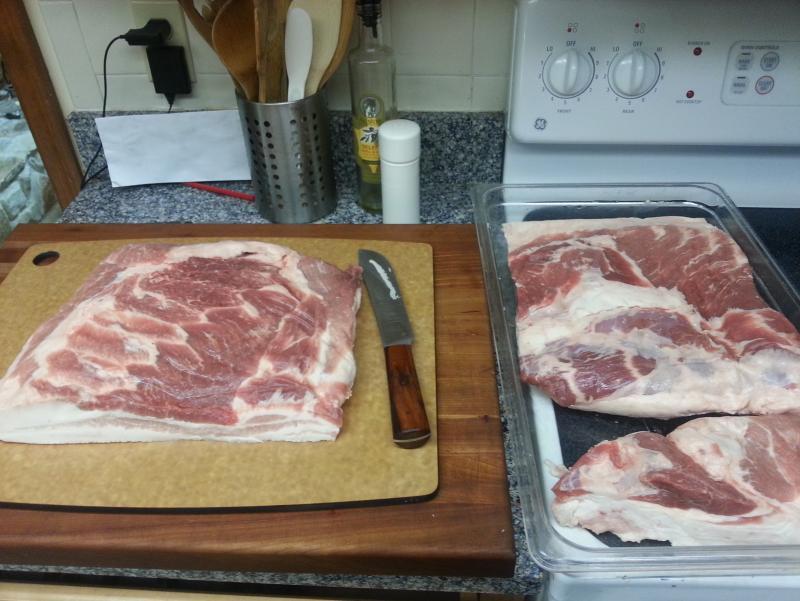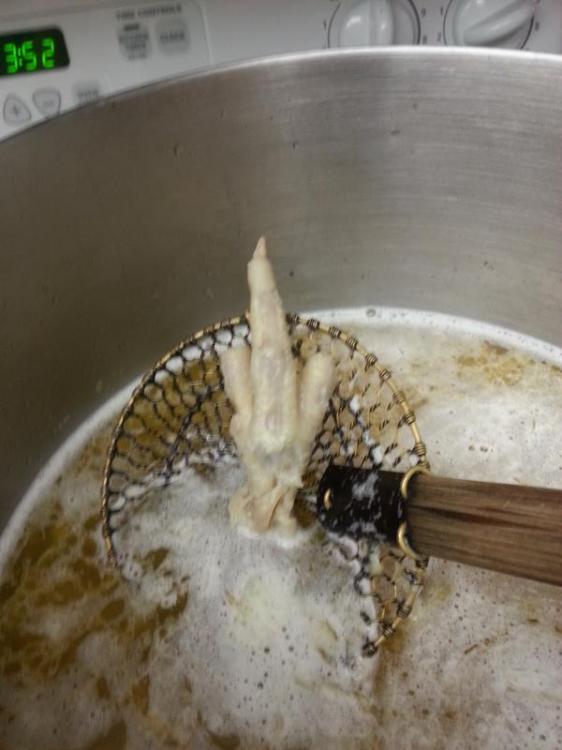-
Posts
386 -
Joined
-
Last visited
Content Type
Profiles
Forums
Store
Help Articles
Everything posted by daveb
-
I was recently plagerizing a dish from Virginia Willis' "Lighten Up" and wanted to add some visual appeal. The lemon added to the grilled shrimp and pepper dish and looked good too. I think it worked because it was a grilled dish. Was fun to make, fun to present and fun to eat.
-
Yes. This less expensive model has the same springs and rods but the body is made of lexan (or similar plastic type stuff). It is too light to be self supporting while pulling the blade through - have to hold down the bottom. The bottom that is just below the blade. With your fingers. Yes. The stainless model has same springs and rods and is heavy enough to be self supporting while pulling blade through. The Vulkanis (sp?) has changed owner or distributor and is now sold as Brod and Taylor. Same device(s). Current stock of Vulkanis is being exhausted and new stock is the B&T. I've used them both and owned the stainless model. Rods are very coarse for sharpening, I would guess equivelent to 2-300 grit. Better than most pull though "systems", very easy for a novice to use, takes up small footprint on countertop and is better than not using anything. I gave mine to a friend who is an average home cook (Wusties and Shun) and it serves her well. Same limitations as other pull throughs, coarse edge, no thinning, good for double bevel symetric knives only. I found claims of sharpening serrated edges dubious at best..
-
After you put the boot on it, the color doesn't matter. And you've got to have the boot. :cool:
-
It seems cutting it in with the Vmix is the method of choice for those that do it for a living. I get satisfactory to good results with it usually - have not yet had an epithany moment.
-
I got a similar request for a dinner my mother was hosting. Because of the richness of the foie I served an Amuse plate. The foie was served two ways, a lightly poached torchon (one of Keller's books), and a quick seared peice. Rare duck breast .made it an all duck amuse. Rounding out the plate was a small arugula salad with poached/seared leek and a slice of fresh bread.. Sauce was pomegranite and balsamic reduction with some blackberries. .It did not suck. (though my plating and photo skills could use some help) Critical to success with any foie gras is de-veining the foie. The first lobe I tried to do per cookbook instruction and failed. Thus the torchon. The second lobe I sought advice from a Chef/friend and was able to de-vein cleanly. (Position lobe upside down, use parer to cut out largest vein and any large off shoots, live with the rest) He also advised to sear in a dry pan and be ready to drain off a lot more fat than I would expect. The rest was easy squeezy. Hope this helps.
-
It's not clear if you're going to go into the bath with the bags "as is" or if you'll remove, season and seal? If you're going to season and reseal (I would) then I would add seasoning that will compliment your planned sauce, save bag juices, de-fat, bring to boil and use them as a component of sauce. Are the visible slice marks simple cross hatching (without the cross part)? Sounds like it's going to be most delicious.
-
I don't think I've ever seen this cut - I'm sure I've not cooked it. (Of course that may have to change now.) My question is how did you manage to have leftovers?
-
gfweb offfered an opinion on bark. You've offered Bonder's opinion, that you present as fact, on bark. Did you pose the question(s) so that you could present the correct anwers? (Correct answers of course based on what others opined elsewhere on the internet...)
-
I mispoke, and Diggin is correct. It is (was) sold as lamb loin. Now I'm a bit confused as it appeared to be scaled down beef or venison tenderloin.
-
Step-father's birthday 2day. He's a big fan of lamb, and of food in general. Always a pleasure to cook for. Salad was a sort of Grilled Asparagus Panzanella with SV poached egg - loosely interpeted from Serious Eats. Dinner was Lamb Tenderloin, SV @ 131F, for about 3 hours, hehe. then finished on grill. Cauliflower SV @ 185F for an hour, cauli steaks were seared on grill, rest was pureed. The green beans remail forgotten in the fridge. .
-
You did not comment on the time element. I do "quick" steaks for at least 3 hours, my preference is for 129/130F but 132 should still be in med rare. I did try and shortcut a strip once with only an hour in the bath and though it hit temp and was the right color the texture was off and it tasted and looked underdone. A fail. Other than that season it a little and have at it. If it's great, write it down. If it sux, write it down.
-
Physics aside, simmer starts approx 190F in my kitchen. (Sea level). Small bubble stream around edges. Approx 210 is a boil, 212 is a roiling boil. Stocks are simmered not boiled when you don't want to cook off marrow and other "stuff" in bones and make the stock cloudy. Quick google found: http://www.wisegeek.org/what-is-a-rolling-boil.htm .
-
Pork Belly - Chinese New Year I posted a pick of a Duroc pork belly above - the start of the process. Half of it was used at a Chines New Year celebration and haf was uses at a Japanese food group gathering that I belong to. Getting a little stupid - because I can - with the Chinese dish. Marinated, Seared, Smoked to 125F, Bagged, SV @ 160 for 48, Cooled, Pressed, Reheated, Seared, Sauced, Served.
-
IMO 62C (144F?) is a high temp for lamb and 24 seems like a long time at that high temp. I've done butterflied legs for 3 hr @ 133F then a quick sear and it worked well. My experience with lamb is that it has a very small temp window to be good. Below 130F (54.5C) and it's a bloody mess. Above 138F (59C) and it gets tough fast. Much less forgiving than beef or pork. I do understand that (though not why) some like red meat well done. Your pic and description is pretty much what I would expect from the time/temp used.
-
Yes. But. These are electronic units and they will all suffer some level of infant mortality. How the respective companies deals with this is part of the equation for me. Anova has put out enough units to establish a very good track record with cust service. A unit fails, they'll give you a Fedex return authorization and as soon as your failed unit hits the system they will ship a new one. Have not heard anything about Sansaire or Nomiko. Have heard that Polyscience is a bit overwhelmed trying to provide cust service and is going to be retailing its personnal unit through Bienville. Agree with above that it's better to reach into a box and pull out any available unit than to not have one at all. But make mine an Anova.
-
-
Musty? You've got to wash their feet! For an Asian stock I like wings and feets but no veg. For a Western stock its mire poix, wings and chicken parts - necks, backs, whatever else is in the freezer. Took pic for friend who asked how I made clear stock. Again if you want to add something extra, everything I've read on subject suggests that gelatin is better used in cold product. Xi gum and/or Versawhip in hot product.
-
I'm just scratching the top of the thickener world but it's my understanding that gelatin is at it's best when thickening cold, usually dairy based, product. Panna Cotta is a classic desert thickened with a little gelatin. And is among my favorites. For hot soups or bases xi gum will work well. I weigh the liquid product and add 0.05 to 0.1% by weight of gum. For 500 g of liquid thats 0.5 g of gum. Max. I used a reloading scale once and I recall that was equivalent of 1/4t. To incorporate that small amount of gum into a large amount of liquid I shear it in while the Vmix is running. Use to much gum or incorporate it slowly and it will have that "snot like" mouth feel. (I do have to admit that I'm old enough to appreciate that none of the whiz bang stuff brings taste and mouth feel to the dish quite like an old fashioned roux. Heresy! I know.) Most recently I've been using versa whip as it's said to be more forgiving of less precise measuring. Ultra Tex is another I would like to know more about. Would like to find a resource that addressed different thickeners, best applications, ratios for thickening and for foams.
-
I've done short ribs ground through a KA and they were some of the best burgers I've ever had. But I did some math and figured the burger meat was about $25/lb. Since then a buddy recommended a mix of short rib and brisket to get a tasty burger without breaking the bank. Have not tried this yet but it's on the agenda. I agree with most above. Clean meat well of sinew and silverskin. Cold meat and cold grinder parts. Season twice. But I cut meat into chunks rather than strips. If gristle or silverskin gets pulled through it won't go on forever. Use the throat size of grinder as a guide so that chunks don't get backed up. KA makes the grinder in two configuratations, a plastic version and an older metal one. I've used both but prefer the metal one. Either way you should have fun with it.
-
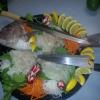
Another player enters the sous vide field: Paragon Induction Cooktop
daveb replied to a topic in Kitchen Consumer
It's a short list. The SVS is quiet. Of course that's because it relies on imaginary circulation. But you asked. -
I see "pink" salt used frequently in brines for pork - because of the resultant color the meat will present. WIthout doing some google fu it seems like it's less than 10% of the salt used in the brine. All of the pork prepared at my house will be brined and the brine solution will contain a small amount of pink salt. (1T pink or curing salt to 1C of regular course salt comes to mind.) Don't recall seeing it as an ingredient in the final dish. Do know it's not something you want to ingest. The confusion may be that brining pork is assumed for pork but specific brining solutions are not addressed in recipes you've seen. And it is not used in the prep for the final dish..
-

Another player enters the sous vide field: Paragon Induction Cooktop
daveb replied to a topic in Kitchen Consumer
It will be interesting to watch how the various products fare in the market. SVS is virtually obsolete because in large part the counter space it requires. The GE specialized induction hob will face the same obstacle. I like the stand alone sticks and expect them to prevail - but then I had a Betamax back in the day. The bluetooth may be an uneccesary gimmick to most. I like it as I set up my Cambro's on the porch and can monitor that everything is working ok from the kitchen. I do the same thing with the smoker, grill and outdoor fryer.. Right now I do this with remote thermometers (bluetooth), waiting for the Android app for my Annova 2. On the GE "system" I would be most concerned with the reliability of the thermo probe assembly. It appears to be an integrated thermo probe and communication device between the thermo and the base. If the probe fails, the whole assembly will require replacement. And probes fail. Would rather see a removable probe with a standarized "K type?" connector between the probe and the base instead of a proprietary assembly. But that would reduce the cool factor. Interesting. Thanks for posting. -
I'm with the buy a new one if you want one camp. Your's looks just like the one I keep under my smoker for grease drippings. Works fine as is.
-
When I last checked prices on circulators (curiosity - not shopping) the Anova "Pro" model was about 2x the price of the Anova base models. Anova base models were 200ish and VP112 was 600ish. If you're comparing a set up consisting of (1) Anova Pro + ziploc bags @ approx $400 or (2) "Cheapo circulator and VP112 chamber sealer @ approx $600 + price of cheapo circulator (and there are no "cheapo" circulators), then I can only suggest door number 3: Anova base model and decent strip sealer, $200 each @ approx $400. The Anova base model compares well to the Pro model for most applications. Strip sealers have their limitations that can be worked with.
-
I like this: I've done Pepin's Ballentine and found it to be a lot of work, more than I want to do unless I have an audience that can appreciate it.


